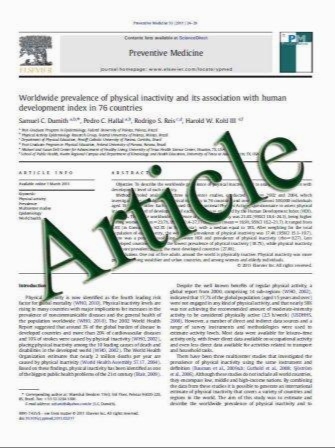PI3K/AKT pathway alterations are associated with clinically aggressive and histologically anaplastic subsets of pilocytic astrocytoma
- نوع فایل : کتاب
- زبان : انگلیسی
- مؤلف : Erika F. Rodriguez Bernd W. Scheithauer Caterina Giannini Amanda Rynearson Ling Cen Bridget Hoesley Heather Gilmer-Flynn Jann N. Sarkaria
- چاپ و سال / کشور: 2010
Description
Pilocytic astrocytomas (PA) are well-differentiated gliomas having a favorable prognosis when compared with other diffuse or infiltrative astrocytomas. Molecular genetic abnormalities and activation of signaling pathways associated with clinically aggressive PA and histologically anaplastic PA have not been adequately studied. We performed molecular genetic, gene expression, and immunohistochemical studies using three PA subsets, including conventional PA (n = 43), clinically aggressive/ recurrent PA (n = 24), and histologically anaplastic PA (n = 25). A clinical diagnosis of NF1 was present in 28% of anaplastic PA. Molecular cytogenetic studies demonstrated heterozygous PTEN/10q and homozygous p16 deletions in 6/19 (32%) and 3/15 (20%) cases of anaplastic PA, respectively, but in neither of the two other groups. BRAF duplication was identified in 33% of sporadic anaplastic PA and 63% of cerebellar examples. BRAFV600E mutation was absent in four (of 4) sporadic cases lacking duplication. IDH1R132H immunohistochemistry was negative in 16 (of 16) cases. Neither PDGFRA nor EGFR amplifications were present. pERK staining levels were similar among the three PA subsets, but a stepwise increase in cytoplasmic pAKT and to a lesser extent pS6 immunoreactivity was noted by immunohistochemistry in aggressive PA groups. This was particularly true in histologically anaplastic PA when compared with conventional PA (p\0.001 and p = 0.005, respectively). In addition, PTEN expression at the mRNA level was decreased in histologically anaplastic PA when compared to the other groups (p = 0.05). In summary, activation of the PI3K/AKT in addition to MAPK/ERK signaling pathways may underlie biological aggressiveness in PA. Specifically, it may mediate the increased proliferative activity observed in histologically anaplastic PA.
Acta Neuropathol (2011) 121:407–420 DOI 10.1007/s00401-010-0784-9 Received: 23 September 2010 / Revised: 24 October 2010 / Accepted: 16 November 2010 / Published online: 28 November 2010


